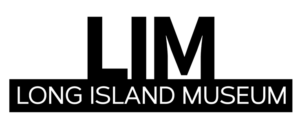What is the Long Island Long Ago program?
Long Island Long Ago is a two-hour program designed to help students answer the question, “What was life like on rural Long Island in the mid-19th century?” The program has three segments: the studio, where students learn about indoor life on a farm and also learn a 19th century dance; the barn and carriage shed, where students learn about crops, farm tools and the care of horses; and the Art Museum where students use the paintings of William Sidney Mount as documents to learn about 19th century occupations, leisure, dress and diet. In the first two sections, students have an opportunity to handle and use mid-19th century tools and equipment. In the Art Museum, students learn to read labels and have a chance to examine a stretched canvas.
How does the Long Island Long Ago program fit into my curriculum?
This program supports the social studies curriculum by helping students compare and contrast life on Long Island in 1850 and today, as they handle artifacts and draw inferences about the materials used in making them and the work involved in using them. The program supports the art curriculum by allowing students to study original art and by teaching observation and visual literacy skills.
What should my class do before we visit?
- Establish the time frame – Long Island in the mid 1800s; a time when most people farmed and before electricity was widely used.
- Ask the students to use the Internet to find information about William Sidney Mount.
- Ask the students to dress appropriately: part of the program takes place in an unheated barn and shed.
- Ask each student to wear a nametag.
What can my class do after the visit?
- Have your students write a paragraph comparing life in 1850 with life today.
- Ask the students to draw a series of pictures of everyday people doing ordinary things today so that people 150 years from now will know what life was like here.
- Organize a museum in your classroom for things students collect and would like to share with others. Have students write labels for their artifacts.


